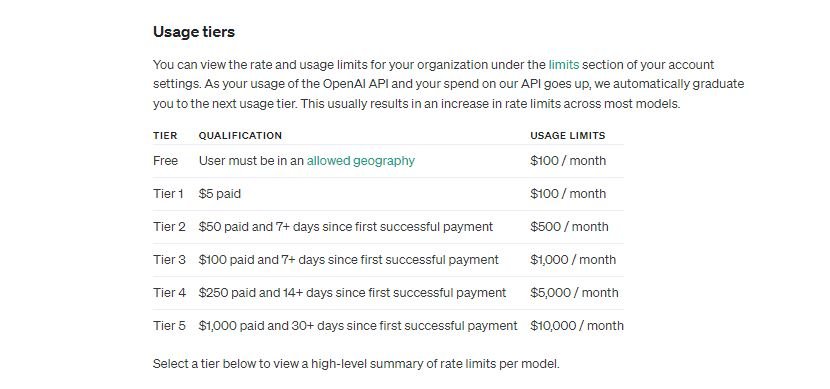OpenAI, a leading research and development company in the field of artificial intelligence, has made a significant move that is sending ripples through the AI community.
They have doubled the rate limits for their GPT-4 Turbo model and completely removed daily limits, effectively granting users much more freedom and power when working with this advanced language processing tool.
This change has been met with a wave of enthusiasm from developers and researchers who are eager to explore the potential of GPT-4 Turbo’s capabilities at a faster pace.
Social media comments on the announcement paint a picture of excitement, with users expressing gratitude, praising the move as “pure turbo speed,” and even suggesting it’s a response to Google’s recent AI advancements.
But what exactly does this change mean for users? Let’s break it down:
What is GPT-4 Turbo?
GPT-4 Turbo is a powerful language model from OpenAI, capable of generating human-quality text, translating languages, writing different kinds of creative content, and answering your questions in an informative way.
It is one of the most advanced language models available today, but its use has been limited by rate limits, which restrict the number of tokens (think of them as small units of text) that can be processed per minute or day.
What has changed?
Previously, there were two main limitations on GPT-4 Turbo usage:
- Requests per minute (RPM): This limited how many times you could call the API per minute.
- Tokens per minute (TPM): This limited the total amount of text you could process per minute.
OpenAI has now doubled the TPM limit for GPT-4 Turbo, meaning you can process twice as much text within the same timeframe. Additionally, they have completely removed the daily limit, giving you even more flexibility for extended projects.
Here’s a table summarizing the changes:
|
Feature |
Tier 1 |
Tier 2 |
Tier 3 |
Tier 4 |
Tier 5 |
|
Previous TPM Limit |
300,000 |
300,000 |
300,000 |
300,000 |
300,000 |
|
New TPM Limit |
600,000 |
450,000 |
600,000 |
800,000 |
1,500,000 |
|
Increase (%) |
100% |
50% |
100% |
166.67% |
500% |
|
Daily Limit |
Yes |
Yes |
Yes |
Yes |
No |
This change has the potential to significantly impact how users interact with GPT-4 Turbo. Here are some potential benefits:
What Are The Implications in the Real World?
- Faster processing: With double the TPM limit, tasks that previously took longer can now be completed in half the time. This could be particularly beneficial for tasks like generating large amounts of text, translating long documents, or running complex experiments.
- Increased flexibility: Removing the daily limit allows users to work on larger projects without worrying about hitting a quota. This opens up new possibilities for using GPT-4 Turbo in research, creative endeavors, and more.
- Enhanced creativity: With more processing power available, users can explore more complex and nuanced prompts, potentially leading to even more creative and interesting outputs from GPT-4 Turbo.
Along with this, the social media response to OpenAI’s announcement has been largely positive. Many users are excited about the increased capabilities and potential of GPT-4 Turbo.
However, some have expressed concerns about the potential costs associated with exceeding limits and the competitive landscape between AI companies.
So, What’s Our Perspective on This Take?
(Screenshot from OpenAI)
There’s no denying the excitement surrounding this change. Besides the positive aspects, we have some questions that only time can answer. We encourage you to comment below if you have some other perspective as well…
a. Positive Aspect:
There’s no denying the excitement surrounding this change. With double the processing speed and no daily constraints, users can tackle larger projects, experiment more freely, and potentially unlock groundbreaking creative endeavors. This is a massive leap forward for those working at the forefront of AI technology.
b. Beyond the Hype:
It’s crucial to remember that responsible use remains paramount. Even with increased limits, exceeding them can incur significant costs. Users need to optimize their tasks and stay mindful of their budget. Additionally, while GPT-4 Turbo’s capabilities are impressive, it’s not a magic solution for every problem. Understanding its limitations and choosing the right tool for the job is crucial.
c. But is it a sustainable lead?
While OpenAI basks in the spotlight, it’s worth considering the bigger picture. This move can be seen as a response to Google’s recent advancements in AI, potentially intensifying the competition between these tech giants. The question arises: is this a sustainable approach in the long run, or will it lead to an expensive arms race?
d. The Democratization of AI?
While OpenAI is not truly Open and it doesn’t offer a free tier for GPT-4 Turbo, it does provide access to other, less powerful models through a free tier. This raises an interesting question: is this a step towards democratizing AI, making it accessible to a wider audience, or is it simply creating a tiered system where only those who can afford it can access the most advanced tools?
Final Words
OpenAI’s decision to double GPT-4 Turbo rate limits and eliminate daily caps marks a significant milestone in AI accessibility and usability. This update opens new possibilities for developers, researchers, and businesses to harness the power of advanced language models for innovation and problem-solving.
While the potential benefits are undeniable, it’s crucial to approach this development with a critical eye, considering its long-term implications and fostering responsible and ethical use of this powerful technology.
Furthermore, as the industry buzzes with excitement over this development, another powerhouse emerges from the shadows: Google’s Gemma, an open-source AI marvel.
Both advancements promise to redefine the boundaries of AI capabilities, inviting enthusiasts and experts alike to delve deeper into the cutting-edge realms of artificial intelligence. Explore the unfolding saga of AI evolution by discovering more about Gemma’s groundbreaking features.





